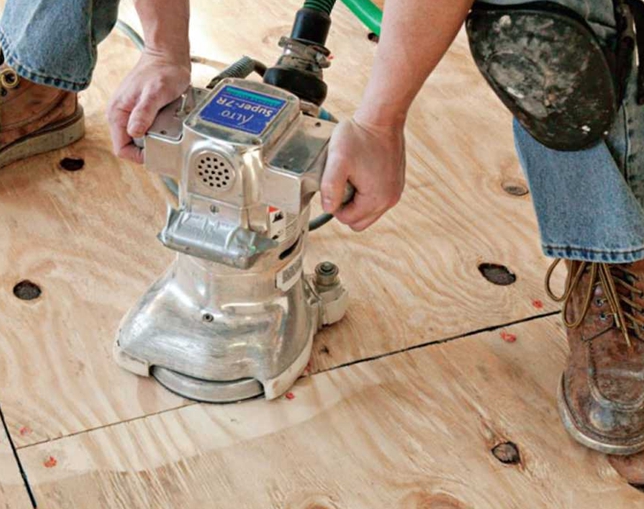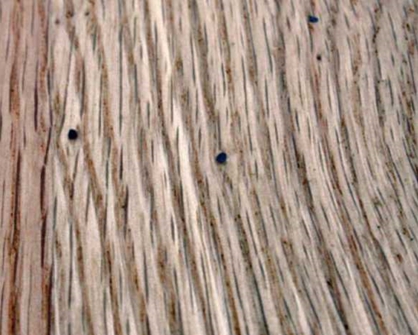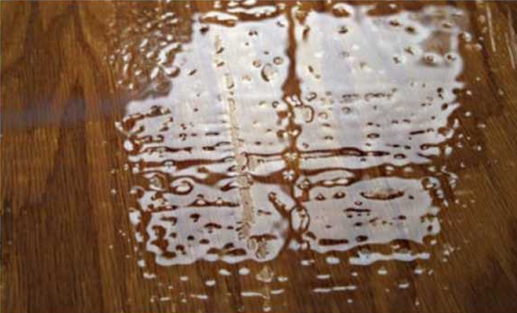KEEP THE SUBFLOOR FLAT
As well as being stiff, subfloors must be reasonably flat or areas of the wood floor would not consistently contact the subfloor, causing squeaks if fasteners don’t suck the flooring down tight or adhesives aren’t able to bridge the gaps. For wood flooring that requires fasteners l/^ in. or longer, the subfloor must be flat within 3/i6 in. over 6 ft. This is approximately the thickness of two quarters and a penny together. Wood flooring installed using shorter fasteners or adhesive requires a subfloor that is flat within !/8 in. over 6 ft. (a penny and nickel). Flatness refers to the highs and lows of a floor, whether or not it’s level.
While there are self-leveling liquids that set into a solid for filling low spots in wood floors, I prefer simply to glue down cedar shims. If the dip is deep enough and wider than a pair of shims laid end to end, I’ll use the preferred method of filling the center with a piece of plywood and feather the edges out using shims. Use plywood whenever possible. And sand down high spots with a floor sander and coarse paper.
Once you’re confident that the subfloor is sound and level, there are still a couple chores left prior to installing any wood flooring. First, if the room has its doors and moldings installed, you’ll probably need to remove some and cut others back. You’ll also have to sweep up. Dirt and woodchips on the subfloor can make installing the flooring difficult, and lead to squeaks and even failure with glue-down floors. Finally, you’ll need to install a vapor retarder atop the subfloor.







